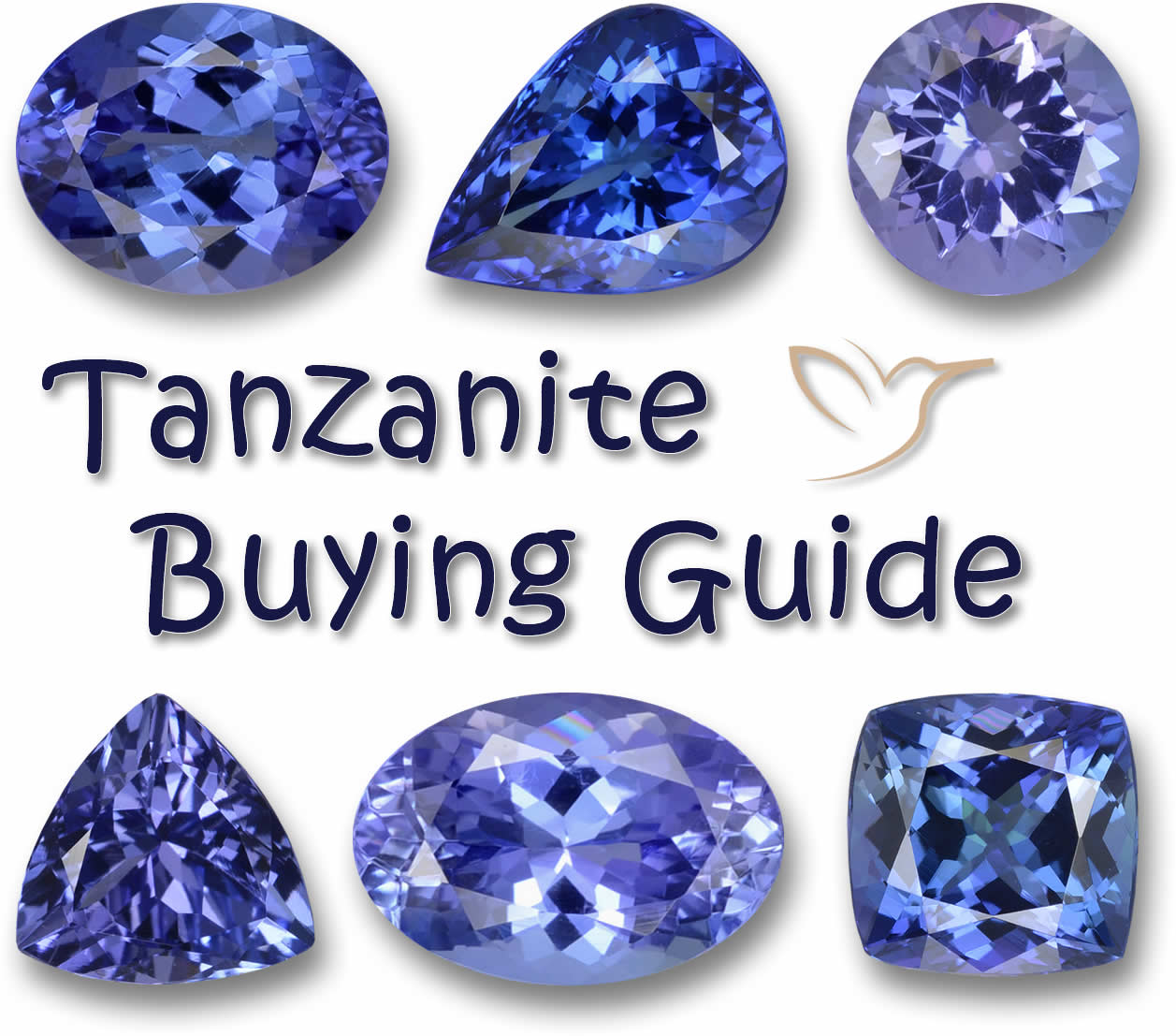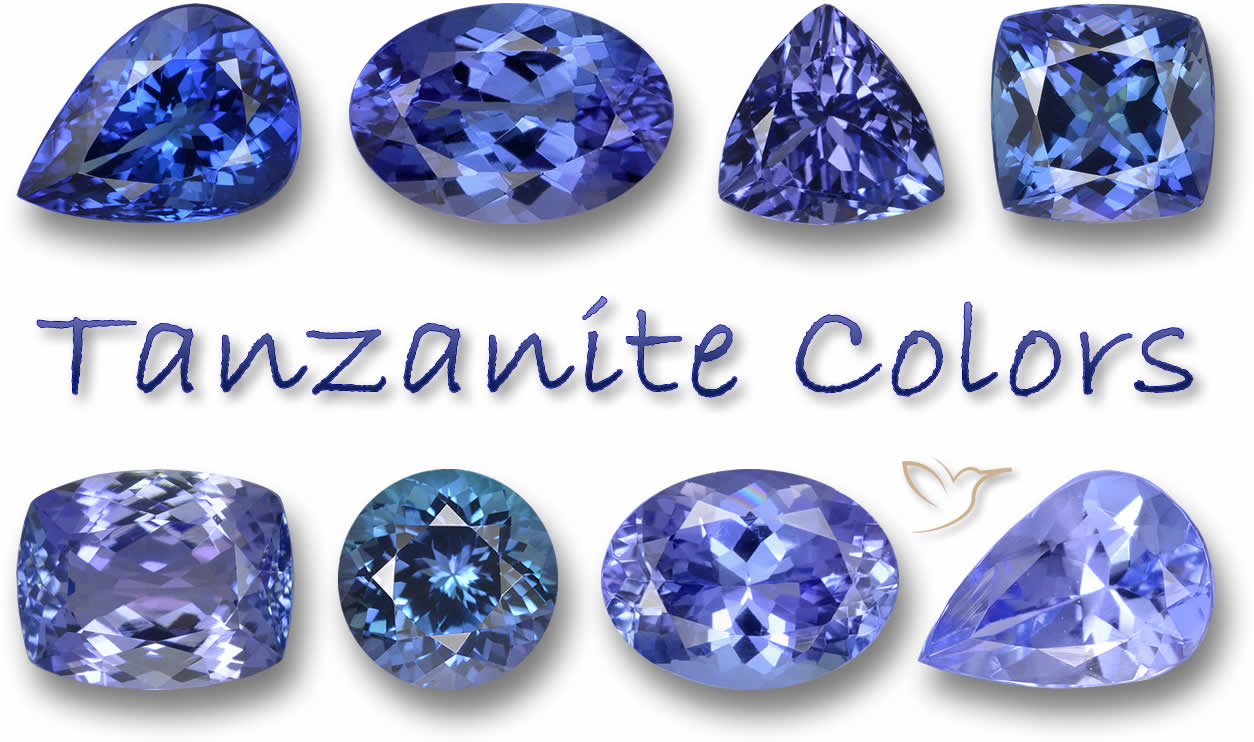Tanzanite Buying Guide - What Factors to Look Out For When Browsing

Tanzanite, with its mesmerizing blue-violet hues, is a gemstone that exudes elegance and sophistication. As one of the rarest gemstones in the world, tanzanite has captured the hearts of many gemstone enthusiasts and collectors.
Although it was discovered little more than 50 years ago and can be found in only one place on earth, Tanzanite has become one of the world's most popular and desired gemstones. Its appeal is obvious the moment you see the intense blue color with flashes of red and purple, but there is more to consider if you want to get the best value for your money.
In this informative buying guide, we'll explore the unique characteristics of tanzanite, including its color variations, clarity levels, and cutting styles. Whether you're looking to purchase a tanzanite for its beauty or as an investment, this article aims to provide valuable insights and expert tips to help you navigate the world of tanzanite gemstone buying with confidence and knowledge. Let's get started - what can you find in this article?
Tanzanite Color
As with all colored gemstones, it's the color of the Tanzanite that determines the value. Tanzanites tend to be either mostly blue or mostly violet, and while personal preference plays a part, the bluer gemstones are the most sought after and, therefore, the most expensive.
Deeply saturated blue-violet or violet-blue colors are deemed the most attractive, but lighter pastel shades also have plenty of admirers and can be found at slightly lower prices.
Many tanzanite gemstones display two or three different colors when viewed from different angles. Again, a dominant blue color with violet, purple, or even red flashes is the favorite. You might notice this pleochroism right away - it's one of the things that makes tanzanite so fascinating.

Tanzanite Clarity
Most tanzanite gemstones worthy of being used in jewelry will be what we call 'eye-clean' - that means any blemishes or inclusions can only be seen under magnification, not with the naked eye. There's no need to settle for anything less. Any fractures or cracks will lower the value considerably.
Some translucent or even opaque tanzanite gemstones can be found as cabochons - rounded shapes with flat bottoms - that can make interesting looking jewelry items or attract the eye of a collector, as they are significantly less expensive than faceted gems.

Tanzanite Weight
Tanzanite gemstones come in all sizes, from tiny stones just a few millimeters in diameter to be used as side stones or in channel and pave settings, all the way up to magnificent gems of 10 carats or more.
The larger stones are, of course, much rarer and can command a considerable price - gemstones of more than 3 carats are three or four times the price per carat than smaller examples.
The size can affect the look of a gemstone immensely, as a nice deep stone can mean excellent color saturation that cannot really be achieved with smaller tanzanites. If you're aiming for that bold color pop, bigger might just be better here.

Tanzanite Cut / Shape
Even the best colored gemstone can be spoiled by poor quality cutting, and this is perhaps more true for tanzanites than most other stones. Tanzanites change color when viewed from different angles, and since blue is the preferred dominant color, cutters will try to ensure the stone is blue when looked at from the top and violet from the side.
Boosting the blue color is more difficult, and if you cut the stone incorrectly, it will appear more violet from the top and therefore be less valuable.
In addition, the gemstone needs to be cut and shaped to maximize the natural fire and scintillation of tanzanites - poorly cut stones will appear dull and lifeless. Oval, pear, round, and cushion cuts are always popular and can really show off the tanzanite's outstanding qualities.

Tanzanite Jewelry Use
Tanzanite is rated at around 6.5 - 7 on the Mohs hardness scale, so it's quite low when compared to sapphires and rubies but is still good for most types of jewelry, although exposed ring settings could be subject to chipping or cracking.
With the variety of sizes available, tanzanite is ideal for jewelry sets, as large singles, matching pairs, and small lots in identical shapes and color are relatively easily obtained.

Tanzanite Treatments
One of the stories surrounding the discovery of tanzanite in the hills of northern Tanzania near the majestic Mt Kilimanjaro tells of Maasai herdsmen tending their cattle not long after a grassland fire. The heat of the fire had caused the normally brown rocks that littered the fields to glow an intense blue.
This may just be a myth, but virtually all tanzanite gemstones are heat treated these days to achieve the stunning blue to violet coloring.
Tanzanite Price
As a rare and beautiful gemstone, tanzanite can command a premium price based on the various criteria such as color, clarity, cut, and carat size that we've mentioned. As an expensive gemstone, we recommend only purchasing from a reputable dealer with an excellent return policy and to get the gemstone properly and independently certified.
| Color | Weight Range | Price Range |
|---|---|---|
|
Light |
1 - 2ct |
$70 - $150 |
|
Light |
2 - 3ct |
$150 - $300 |
|
Light |
3ct + |
$200 - $600 |
|
Medium |
1 - 2ct |
$110 - $350 |
|
Medium |
2 - 3ct |
$180 - $450 |
|
Medium |
3ct + |
$200 - $600 |
|
Deep |
1 - 2ct |
$150 - $500 |
|
Deep |
2 - 3ct |
$200 - $700 |
|
Deep |
3ct + |
$400 - $1500 |
Tanzanite Birthstone
Tanzanite is one of the birthstones for December.
Tanzanite Wedding Gemstone
Tanzanite is the traditional wedding gift for the 24th anniversary.
Tanzanite Durability
Tanzanite is rated 6.5 – 7 on the Mohs Hardness Scale, making it suitable for everyday wear with some care - think pendants or earrings over rings that see a lot of action.

Tanzanite Summary
Tanzanite is a quite unique gemstone in many ways. Firstly, it was only discovered in recent years, making it one of the newest gemstones on the market today. Secondly, it is really only found in one place on earth - in a tiny mining area in the foothills of Mt Kilimanjaro in Tanzania. While some gemstones can change color when viewed from different angles in a phenomenon known as pleochroism, tanzanite can show three colors - trichroism.
All in all, a very special stone with the added possibility that the deposits of tanzanite may run out, whereupon any gemstone will be considered even rarer!
Tanzanite Quick Guide
|
Color |
Blue / Violet |
|
Clarity |
High |
|
Carat Weight |
Small to Medium |
|
Cut |
All cuts but brilliant cut will enhance fire |
|
Price |
High |
|
Treatments |
Common |
|
Birthstone |
December |
|
Wedding Stone |
24th |
|
Jewelry |
All Types – Rings may need protective setting |
|
Durability |
Rated 6.5 – 7 on Mohs Hardness Scale |
Frequently Asked Questions
What is Tanzanite?
Tanzanite is a rare blue-violet gemstone discovered in Tanzania over 50 years ago, known for its unique color-changing properties and limited availability.
Where is Tanzanite found?
Tanzanite is mined exclusively in a small area in the foothills of Mt Kilimanjaro in northern Tanzania.
Is Tanzanite usually treated?
Yes, virtually all tanzanite gemstones are heat-treated to enhance their blue-violet color.
What is the best color for Tanzanite?
The most valued tanzanite features a dominant blue hue with violet or purple flashes, though preferences can vary.
How durable is Tanzanite for jewelry?
Tanzanite rates 6.5-7 on the Mohs scale, making it suitable for jewelry like pendants and earrings, but rings may require protective settings to avoid damage.
Why might Tanzanite become rarer?
The limited mining area suggests deposits could eventually deplete, increasing its rarity over time.

